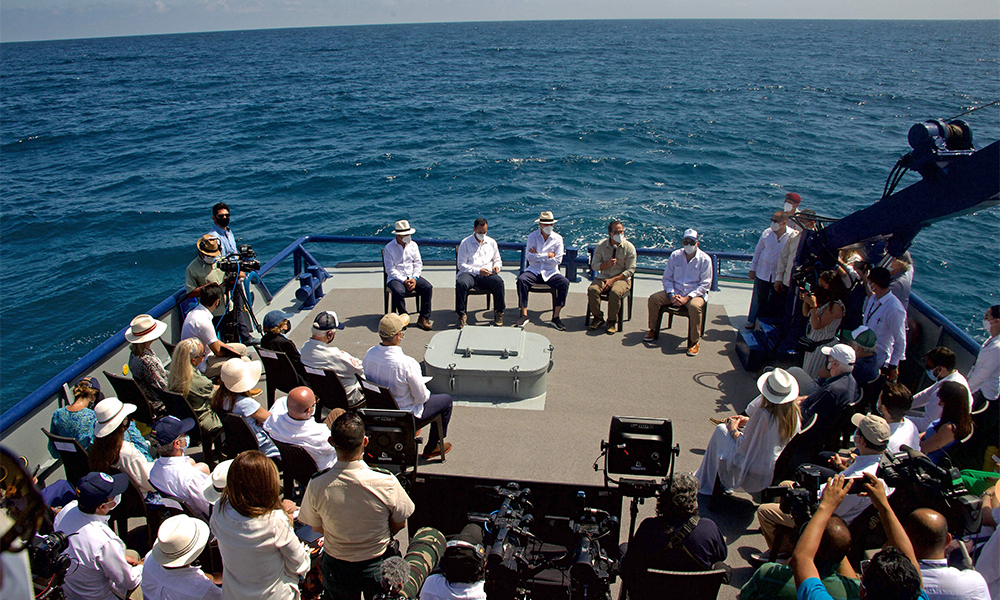Ecuador created a massive new marine reserve Friday north of its Galapagos islands, forming a Pacific corridor up to Costa Rica’s Cocos Island National Park to preserve species of migratory fauna, such as sharks. President Guillermo Lasso, on board a scientific vessel from the Galapagos National Park (PNG) anchored in the bay of Puerto Ayora off Santa Cruz Island, signed the decree creating the new reserve called "Hermandad” (Brotherhood). To mark the opening of the marine reserve, he then cut a ribbon made out of materials collected during coastal cleanups conducted in the Galapagos.
The new reserve is incorporated into the 138,000 square kilometers of reserve that have existed since March 1998. So the archipelago that inspired English naturalist Charles Darwin has now expanded to an impressive 198,000 square kilometers of protected marine area. The Galapagos marine reserve, in which industrial fishing is prohibited, is the second-largest in the world. More than 2,900 marine species have been reported within the archipelago, which is a Natural World Heritage Site.
Authorities are planning for protected areas in adjacent Colombia and Panama to join later, creating an international marine biosphere reserve. The leaders of those two countries also signed the decree along with Lasso. Lasso announced the expansion of the Galapagos marine reserve, which has unique flora and fauna and fragile ecosystems, in November in Glasgow, on the occasion of the COP 26 climate summit. The project was in exchange for a reduction in Ecuador’s international debt.
A ‘clear message’
The creation of the "Brotherhood” reserve is a "clear message for the world,” said Lasso Friday, describing it as a "new relationship with the Earth, a new understanding of what constitutes progress for humanity.” Colombian President Ivan Duque and former US president Bill Clinton attended the event, together with government officials from Costa Rica and Panama.
Duque said that eventually adding Colombia’s Malpelo islands and Panama’s Coiba islands to the vast marine reserve will allow for the migration of species such as sea turtles, whales, sharks and manta rays. This new reserve "will guarantee the survival of 40 percent of the world’s marine species,” Duque said.
"We may be a small territory... but the planet is also ours,” said Lasso. "The seas are great regulators of the global climate,” he said, adding that "taking care of them is not naive idealism, it is a vital necessity.” Located in the Pacific some 1,000 kilometers off the coast of Ecuador, the Galapagos Islands are a protected wildlife area and home to unique species of flora and fauna. The archipelago was made famous by British geologist and naturalist Charles Darwin’s observations on evolution there.— AFP



